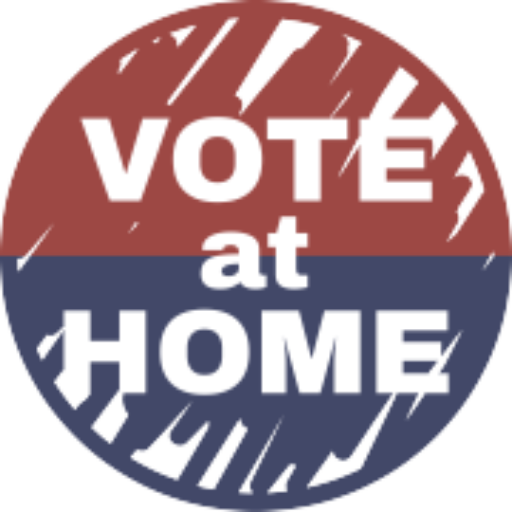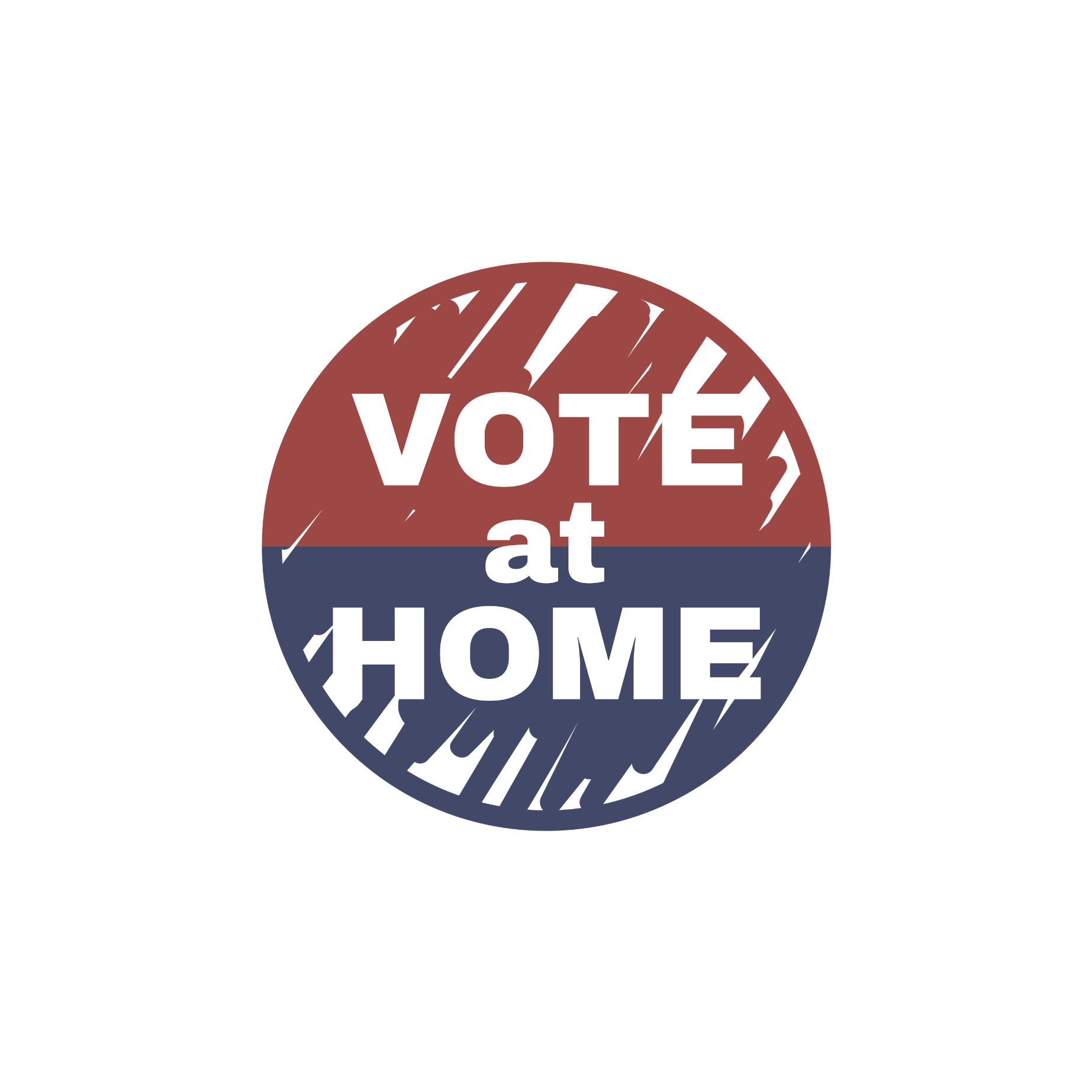Stateline — “Americans have used mail ballots for over a hundred years because they provide a safe and convenient way to ensure the right to vote,” said Barbara Smith Warner, the executive director of the National Vote at Home Institute, which advocates for mail voting. “Research has demonstrated time and time again that voting at home increases voter participation and turnout for all, with no partisan advantage for any side.”
Vote at Home Policy and Research Guide
Many states are undertaking pro-democracy reforms to improve voter access and engagement, including Same Day / Election Day (SDR / EDR) registration, online registration, automatic voter registration (AVR), and early in-person voting (EIPV). Many of these efforts have focused on engaging the electorate at the point of registration, but less so on removing barriers that prevent already-registered voters from exercising their right to actually cast their ballots. Vote at Home (VAH) focuses on removing those barriers, although full VAH states also incorporate best practices that improve voter registration and the ongoing maintenance of voter registration files.
National Vote at Home Institute Welcomes New Board Members
Non-profit organization working to deliver more ballots to voters in every state welcomes a trio of activists and advocates.
(February 1, 2024) — National Vote at Home at Home Institute is kicking off this year with the appointment of three new board members: Judy Beard of the American Postal Workers Union; Kori Blalock Keller of the National Association of Letter Carriers; and Winn Khuong of Action Together™ New Jersey.
“With the Voting Rights Act under increased attack, there’s never been a more important time to expand access to voting at home,” said Executive Director Barbara Smith Warner. “Delivering ballots to voters increases voter participation, saves money, and has multiple security features. Our new board members all have deep knowledge about voting at home, and will bring that to bear on NVAHI’s work in 2024 and beyond to encourage its use as a turnout tool and make it more accessible in every state.”
Judy Beard is the Legislative and Political Director at the American Postal Workers Union. Beard was elected Retirees Department director in November 2007 and is the first woman legislative director in the union’s history. Beard got her postal start in 1970 in Detroit and held many union offices in the Detroit District Area Local, including teaching at the University of Michigan’s School of Industrial Relations, before coming to Washington, D.C.
Kori Blalock Keller is the Chief of Staff at the National Association of Letter Carriers, serving as the principal advisor to the President for all union matters. At NALC, Keller successfully led a coalition of postal stakeholders and bipartisan, bicameral efforts to enact meaningful postal reform following years of inaction. Before joining NALC, Keller spent ten years with the Professional Aviation Safety Specialists, AFL-CIO (PASS), a Federal Aviation Administration (FAA) union, serving as its chief spokesperson and Legislative and Political Representative.
Winn Khuong is the Founder and the Executive Director of Action Together™ New Jersey Education Fund, a nonpartisan 501(c)3 voter education organization. Khuong has been honored with the Alice Paul Award, the Russ Berrie Award, and the New Jersey State Governor’s Jefferson Awards in the Founder/Innovator category. She serves on the Steering Committee of Rising Stars at the Eagleton Institute and previously on Governor Murphy’s Diversity and Inclusivity Council. Khuong was a speaker at the 2018 and 2019 Women’s March, 2018 March for Our Lives, and has appeared in the New York Times, PBS Newshour, and numerous media outlets.
Opportunities to vote at home in 2024 are significant, and the appointment of these remarkable members will propel the critical work of the National Vote at Home Institute, democracy partners, and, most importantly, American voters.
About National Vote At Home Institute
The National Vote at Home Institute is a nonpartisan nonprofit organization that works to increase voters’ access to, use of, and confidence in voting at home, in which voters are delivered mailed-out paper ballots; return them either by postage-free mail or in-person to a wide range of accessible, convenient, and secure locations; and can track them online, in real-time, to ensure their vote is counted.
Illinois Lawmakers look at Proposal Allowing Counties to move Primarily to Vote at Home
WGEM — Members of the Illinois House Ethics and Elections Committee discussed a proposal Wednesday allowing counties to go primarily to a vote at home system.
New York’s New Vote at Home Law Faces an Early Test
Gothamist — A mid-February special election is poised to be the first test of a new New York state law that will allow early voting by mail. According to National Vote at Home Institute Executive Director, Barbara Smith Warner, the new law is about “centering the voter” and ensuring that life, especially in mid-winter, does not prevent someone from participating in the election.
Cost of Elections
Voice of San Diego — Registrar of Voters Michael Vu faces the logistical headache of all logistical headaches every election year.
With the help of a staff of 64 that balloons to 9,000 on Election Day, he needs to make sure that voters get ballots and sample ballots. That’s no simple task. San Diego County is so full of public agencies with elected officials that the registrar must print up nearly 600 different ballots for voters, depending on where they live. Plus nearly 600 sample ballots. And every single ballot and sample ballot has to be translated into five languages.
Then Vu has to oversee the counting and certification of the votes before the process starts over again. In his seven years with the county, he’s only had one (2011) that passed without a single election.
Now, the Registrar of Voters office is finishing its move into a new building in the county’s sparkling new administration complex, getting ready for the special San Diego mayoral election on Feb. 11 and assisting candidates who want to get on the ballot in 2014.
Vu, who previously worked in the election world in Salt Lake City and Cleveland, could see his job drastically change if California elections ever move to mail-only or online-only voting. For now, though, it doesn’t look like that will happen soon.
In a Q-and-A, Vu talked about the high cost of elections (the Feb. 11 mayoral election alone is estimated to run $4 million to $5 million), the differences between elections in Cleveland and here, and the reason he thinks of himself as a wedding planner.
States That Send a Mail Ballot to Every Voter Really Do Increase Turnout, Scholars Find
Oregon Capital Chronicle — Lately, a rough consensus has emerged among people who study the impact of voting policies: Though they often spark fierce partisan fighting, most changes to voting laws do little to affect overall turnout, much less election results.
But one fast-growing reform appears to stand out as an exception. When every registered voter gets sent a ballot in the mail — a system known as universal vote-by-mail — voting rates tend to rise, numerous studies have found.
Advocates for mail voting say these findings haven’t gotten the attention they deserve, and that they should lead more states that want to boost turnout to adopt UVM, as it’s called.
New York Governor Signs Legislative Package to Strengthen Democracy and Protect Voting Rights
New York Governor — Governor Kathy Hochul signed a legislative package to strengthen democracy and protect voting rights in New York State. This legislative package, which includes Early Voting by Mail, builds upon New York State’s ongoing efforts to improve and protect access to the ballot box for all New Yorkers, including last year’s enactment of the John R. Lewis Voting Rights Act of New York, the most expansive state level voting rights act in the country.
National Vote at Home Institute Study Demonstrates Higher 18-34-year-old 2020 Turnout in States that Automatically Mailed Voters a Ballot
(September 5, 2023) — Today, the National Vote at Home Institute (NVAHI) issued a research paper examining 18-34-year-old voter turnout in the 2020 Presidential election, both overall and by key race/ethnicities. The study calculated and analyzed turnout rates using two critical denominators — eligible citizens and active registered voters — for 42 states for which sufficient age-related data was available.
Young voters aged 18-34 — overall and by key race and ethnicities — had significantly higher turnout rates in the cohort of 10 Vote at Home states and Washington, D.C., that automatically mailed ballots to all active registered voters in 2020. Using Citizen Voting Age Population (CVAP) and Active Registered Voter (ARV) datasets from a Voter Participation Center study and a significant list vendor (Catalist), the research team first examined overall 18-34 turnout rates. Six of the top 10 states for eligible citizen turnout in 2020 – and eight of the top 15 for active registered voter turnout –were Vote at Home jurisdictions. Only one Vote at Home state (Nevada) was a 2020 battleground state; most others failed to make either list.
To further analyze turnout rates of 18-34 year old white, Black, and Latino voters, the nine Vote at Home jurisdictions with available data were compared with four other cohorts. These were the seven 2020 battleground states that didn’t use this approach; ten non-Vote at Home states with Same Day/Election Day (SDR/EDR) registration policies; ten non-Vote at Home states with Automatic Voter Registration (AVR); and the remaining 16 states with none of these policies. Of the 32 possible turnout rate comparisons, using both the CVAP and ARV denominators, Vote at Home states triumphed, in all 32 instances, often by dramatic margins.
“Despite billions spent by the major political parties on media ads, voter registration drives, and other Get out the Vote efforts targeting young voters, it was non-battleground, Vote at Home states that dominated the list of Top Turnout states for young voters in 2020,” said Barbara Smith Warner, NVAHI Executive Director.
New Jersey, a non-battleground state, boasted the nation’s highest 18-34-year-old turnout rate of eligible citizens (CVAP) at 64%, compared to a 50% national average. Montana, which like New Jersey used this system for the first time in 2020, topped the list for 18-34 active registered voter turnout, at 86%.
“While SDR/EDR and AVR policies also seem to boost young voter turnout, their impact appears to be a fraction of the turnout increase that happens when states automatically deliver ballots to all voters, especially young voters,” said Phil Keisling, chief author of the study. Keisling chairs NVAHI’s Board and served as Oregon Secretary of State from 1991-99.
Read the full report here.
About National Vote At Home Institute
The National Vote at Home Institute is a nonpartisan nonprofit organization that aims to increase voters’ access to, use of, and confidence in voting at home, in which voters receive mailed-out paper ballots; return them either by postage-free mail or in-person to a wide range of accessible, convenient, and secure locations; and can track them online, in real-time, to ensure their vote is counted.
18-34 Year Old 2020 Turnout Overall and by Key Race and Ethnicities
An analysis of voting file data provides powerful, new evidence of significantly higher turnout in the 2020 presidential election among 18–34-year-olds, including voters of color, in Vote at Home jurisdictions in which all active registered voters automatically received paper ballots via the U.S. mail before the election. Young voters by key race and ethnicities had significantly higher turnout rates — calculated by the Citizen Voting Age Population and Active Registered Voter denominators — in Vote at Home states in contrast to 2020 battleground states or 2020 non-VAH states with Same Day/Election Day Registration or Automatic Voter Registration.







